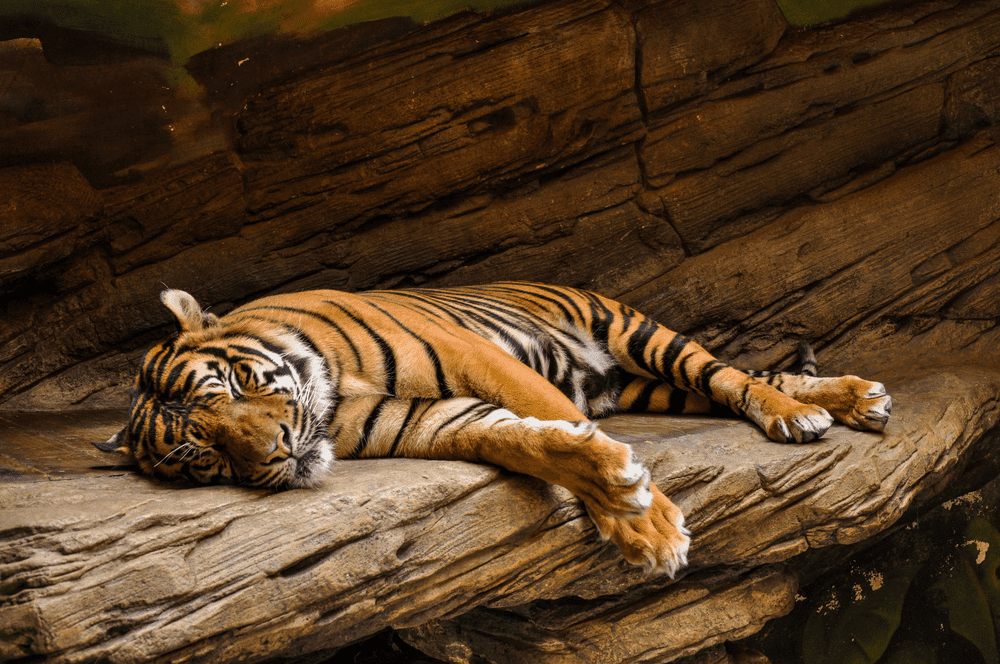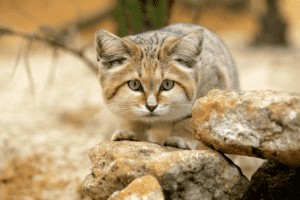Did you know that there are seven big cats in the world?
These animals are some of the most majestic creatures on Earth and include lions, tigers, leopards, jaguars, cheetahs, cougars, and lynx. Each of these cats has its own unique characteristics and habits. In this article, we will take a closer look at each of these species and learn more about their behavior and habitats.
All of these cats are members of the Felidae family, which contains around 38 different species of cat. The seven big cats are the largest members of this family.
Table of Contents
How Are Big Cats Classified?
There are two primary methods of classifying big cats: their scientific name and common name. The scientific name is Felidae, and this family includes all the species of wild cats. The common name, meanwhile, is Panthera. This genus includes only those species that can roar.
There are only seven members of the Panthera genus: lions, tigers, Cheetah, leopards, jaguars, Lynx, and Puma. All of these cats are considered big cats.
What are the 7 Big Cats In the world
There are the following 7 big cats in the world:
Tiger:

Scientific name: Panthera Tigris
Where to see this big cat: India, Bangladesh, Nepal, Bhutan, China
Size: The largest of all living cats, tigers can reach a total body length of up to 12 ft (370 cm) over curves and have a shoulder height of about 30 in (76 cm).
Weight: The weight of an adult tiger varies considerably between subspecies, with Bengal and Siberian tigers tending to be the largest, and Sumatran tigers the smallest. Males of all subspecies typically weigh between 400 and 650 lb (180 and 290 kg), while females weigh about 33% less, averaging between 250 and 375 lb (110 and 170 kg).
The tiger is the largest of all the big cats. They are native to Asia and can be found in countries like India, China, and Russia. Tigers are one of the most endangered animals in the world and there are only an estimated 3000 left in the wild. The main threat to tigers is habitat loss due to deforestation and hunting.
The life span of tigers typically lives 15 to 20 years but can reach up to 26 years. Diet of the tiger is a carnivore and feeds on a wide range of large mammals, such as deer, pigs, buffalo, and wild boar. Tigers are found in a variety of habitats, including rainforests, mangrove swamps, grasslands, and savannas.
There are currently two recognized subspecies of tigers: the Panthera tigris, or Bengal tiger, and the Panthera tigris sondaica, or Sumatran tiger.
Panthera tigris:
The Bengal or Panthera tiger is found in India, Nepal, Bhutan, and Bangladesh, and is the most numerous of all tiger subspecies. Bengal tigers have orange or yellow fur with black stripes and white fur on their belly. Their coat is shorter than that of other tiger subspecies, which helps them stay cool in their hot climate.
Panthera tigris sondaica :
The smallest of the tigers, Panthera tigris sondaica is found only on the Indonesian island of Sumatra. The Panthera tigris sondaica or Sumatran tiger is a tiger subspecies that inhabits the Indonesian island of Sumatra. The Sumatran tiger is the only surviving member of the Sunda Islands tiger group and is classified as Critically Endangered by the IUCN.
Lion:
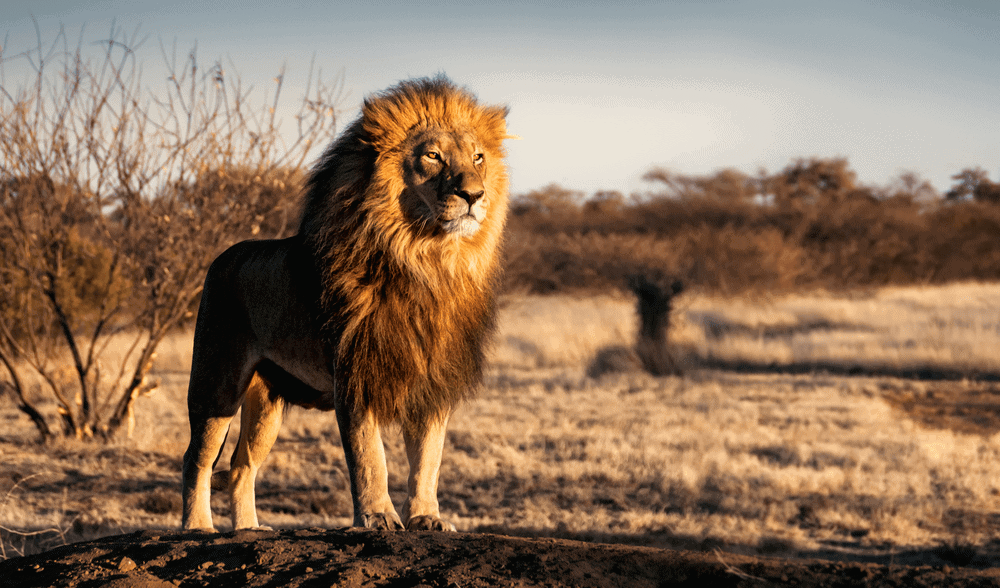
Scientific Name: Panthera leo is one of the four big cats in the genus Panthera and a member of the family Felidae.
Weight: The lion is sexually dimorphic; males are larger than females with a typical weight range of 150 to 250 kg (330 to 550 lb) for males and 120 to 182 kg (265 to 400 lb) for females.
Where to see this: Africa
Size: Male lions are about four feet tall at the shoulder. Females are about three feet tall.
The lifespan of a lion includes an average range of about 12 to 20 years. The lion’s diet is carnivores and they eat a large variety of prey. The diet of the lion includes eating mostly meat such as antelopes, buffalo, zebra, and wildebeest. Lions can be found in Africa and India. An interesting fact is a group of lions is called a pride.
There are two recognized living subspecies of lions- Panthera leo Leo(found in the Indian subcontinent) and Panthera leo persica( found in Africa, northwest India, and Pakistan).
Panthera Leo Leo:
The Asiatic or Indian lion once ranged from the Middle East to northern India but is now confined to a small region in and around the Gir Forest National Park in Gujarat, India.
Panthera Leo Persica:
The African lion is found throughout sub-Saharan Africa. It has declined significantly over the past few decades and is now classified as Vulnerable by the IUCN.
Cheetah:

Scientific Name: Acinonyx jubatus
Size: Head and body: 112 to 150 cm Tail: 60 to 84 cm
Weight: 48 to 68 kg
The cheetah is the fastest animal on land. They are slender with long legs, a small head, black spots, and a long tail. The speed of a cheetah is 100 to 120 km/h (the fastest recorded speed for a land animal is 109.44 km/h). Lifespan in the wild is about 12 years.
The habitat of the cheetah is African and Iran. The Diet of cheetahs includes Small to medium-sized mammals such as gazelles, impalas, rabbits, and birds.
There are currently four recognized subspecies of cheetahs:
- Acinonyx jubatus venaticus: The Asiatic cheetah, also known as the Iranian cheetah, is a critically endangered cheetah subspecies surviving today only in Iran. By 2016, only 50 to 100 individuals were estimated to survive in the wild in central Iran.
- Acinonyx jubatus guttatus: The northern cheetah (Acinonyx jubatus guttatus), also known as the Sudan cheetah, is a subspecies of cheetah found today only in Iran and eastern and north-western Africa.
- Acinonyx jubatus jubatus: The southern cheetah (Acinonyx jubatus jubatus), also known as the Namibian cheetah, is the fastest land animal. It is a subspecies of cheetah found in southern Africa.
- Acinonyx jubatus rex: The king cheetah (Acinonyx jubatus rex) is a rare African cat characterized by a blotchy coat pattern instead of the typical spots. It occurs in southern Africa.
Jaguar:

Scientific Name: Panthera onca
The jaguar is the largest cat in the Americas and the third-largest cat in the world. The jaguar is a powerful predator. Jaguars are known to kill prey much larger than themselves, including caiman, deer, and even anacondas.
Where to see this: Brazil, Mexico, and Argentina
Weight : Up to 350 lbs (159 kg)
Size: Up to six feet (183 cm) long
Jaguars are an endangered species and their population has declined by about 50% over the past 20 years. The lifespan of the jaguar is Up to 20 years in the wild is up to 30 years in captivity. The Diet of the jaguar is Carnivore. The habitat of the cheetah is South and Central America.
There are the following subspecies of the jaguar found across Central and South America.
- Panthera onca Augusta: Found in Brazil, Guyana, Suriname, and French Guiana.
- Panthera onca peruvianus: Found in Peru, Bolivia, and Ecuador.
- Panthera onca palustris: Found in Colombia, Ecuador, Guyana, Peru, Suriname and Venezuela.
- Panthera onca paragenesis: Found in Paraguay, Brazil, Uruguay, and Argentina.
- Panthera onca panamensis: Found in Panama.
Leopards:

Scientific name: Panthera pardus.
Weight: Males up to 154 pounds, females 110 pounds
Speed: Up to 37 miles per hour
It is a member of the Felidae family with a wide range in some parts of sub-Saharan Africa, West Asia, the Middle East, South and Southeast Asia to Siberia. The smallest of the big cats, leopards are incredibly strong and agile.
The leopard is listed as Vulnerable on the IUCN Red List because leopard populations are threatened by habitat loss and fragmentation, hunting for the trade of their body parts, and persecution due to conflict with humans.
The lifespan of a leopard is 12-17 years. The Diet of leopards includes is small to medium-sized prey, including rodents, reptiles, and birds.
There are following sub species of leopards:
- Panthera pardus pardus: The Indian leopard is a leopard subspecies widely distributed in the Indian subcontinent.
- Panthera pardus fusca: The Javan leopard is a Panthera pardus subspecies native to the Indonesian island of Java.
- Panthera pardus orientalis: The Persian leopard is a Panthera pardus subspecies occurring in Iran, Afghanistan, Turkey and Central Asia.
- Panthera pardus delacouri: The Indo-Chinese leopard is a Panthera pardus subspecies native to mainland Southeast Asia.
- Panthera pardus japonensis: The Amur leopard is a Panthera pardus subspecies inhabiting mainly the Primorsky Krai region of southeastern Russia.
- Panthera pardus melas: The Sri Lankan leopard is a Panthera pardus subspecies native to Sri Lanka.
Puma:
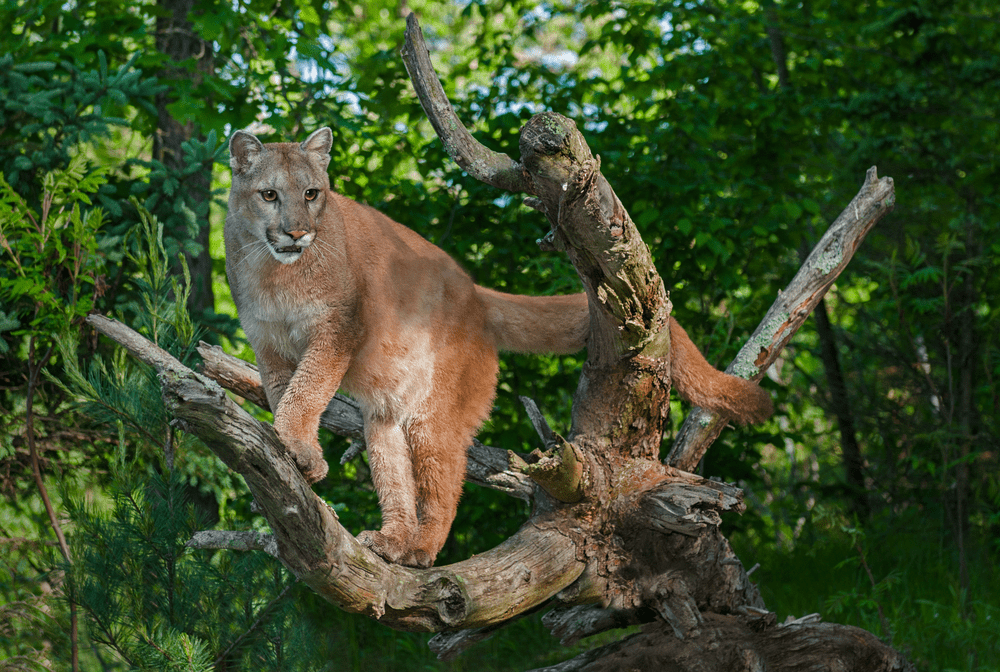
Scientific Name: Puma concolor
Where to see: Canada, United States, Mexico
Weight: Up to 160 pounds (72.57 kg)
Size:
Length: Up to eight feet (244 cm), including the tail Height: About three feet at the shoulder (91.44 cm)
The Puma is a cat with many names including the cougar, catamount, and panther. It is one of the largest cats in North and South America. Pumas live in a wide variety of habitats including mountains, forests, and deserts. The habitat of the puma is dense forest. Diet includes the puma is Deer, elk, moose, bighorn sheep, rabbits, beavers, and porcupines. The lifespan of the puma is around 12-15 years.
There are the following subspecies of the puma:
- P.c. cougar: Found in North and South America
- P.c. concolor: Found in South America
- P.c. costaricensis: Found in Costa Rica and Panama
- Puma coryi: Also known as the “eastern puma” or “Appalachian mountain lion”, this subspecies was declared extinct in 2011 by the U.S. Fish and Wildlife Service.
- puma: Found in Argentina, Uruguay, Chile, and central Brazil
- P.c. stanleyana: Also known as the “Audubon’s puma”, this subspecies is found in the western United States and Canada
- P.c. vancouverensis: Found in British Columbia, Canada
Lynx:
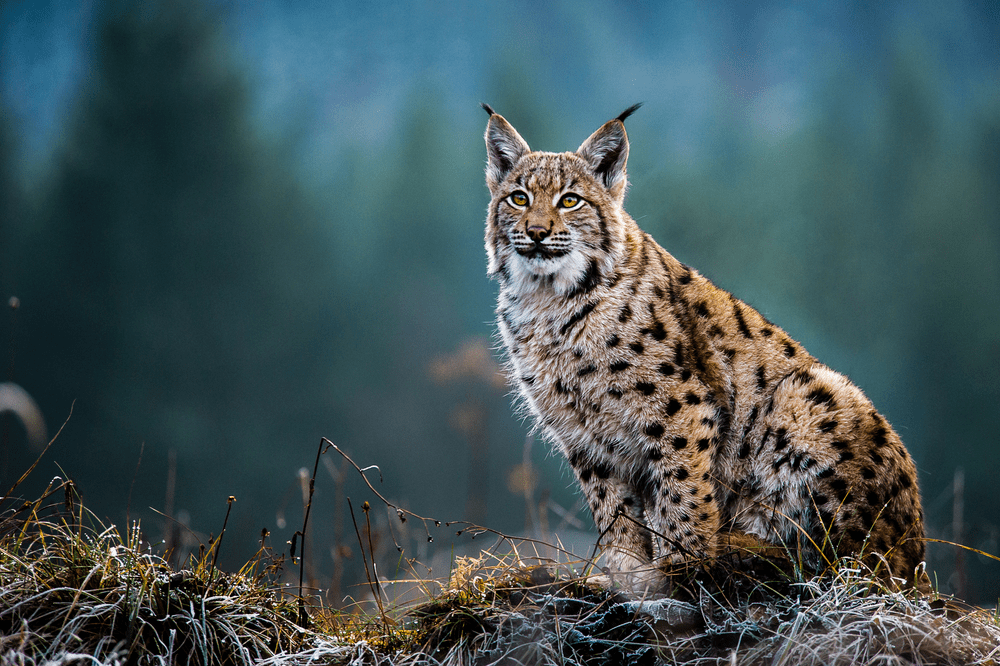
Scientific Name: Felis lynx
Weight: 18-40 pounds (males are typically larger than females)
Speed: Can run up to 30 mph
The Lynx is a wild cat that can be found in Europe, North America, and Asia. They are the largest of the four lynx species and can grow up to almost four feet long. An interesting fact about lynx is Lynx have furry tufts of hair on the tips of their ears that help them hear prey better.
Lynx lives in forests and woodlands. The Lynx diet includes ptarmigan, grouse, hares, rabbits, rodents, caribou, deer, and wild sheep. They will also eat berries, vegetation, and grasses.
There are the following species of lynx found in the world:
- Eurasian Lynx: The Eurasian Lynx is the third-largest lynx species and is predominantly found in Norway, Sweden, Finland, Russia, Central Asia, and China.
- Iberian Lynx: The Iberian Lynx is the rarest cat species in the world and is found only in Spain and Portugal.
- Canadian Lynx: The Canadian Lynx is a North American lynx species that is found in the boreal forests of Canada and Alaska.
- Bobcat: The Bobcat is a North American lynx species that is found in southern Canada, the United States, and northern Mexico.
Read Also: What Animals live in Bambo Forests
Who would win in a fight: a jaguar or a tiger?
Each big cat has its own special abilities and strengths. But if we’re comparing powerhouses, then the two biggest cats are definitely the jaguar and the tiger.
There is no clear answer, as it would depend on many factors, such as the size and weight of each animal, their fighting style, and whether or not they had any prior experience fighting each other. If we looked at real-life examples of fights between these two animals, we would see that sometimes the jaguar won and sometimes the tiger won.
What animal eats a lion?
No predator in the wild hunts lions to eat them. In fact, most predators will only attack a lion if they are threatened or starving. Humans are the only animals that regularly hunt lions for food.
What is the most dangerous big cat on the planet?
The most dangerous big cat on the planet is the tiger. Tigers are apex predators and can take down prey much larger than themselves. They are also very aggressive and have been known to attack humans.
Why are there no big cats in Australia?
The reason why there are no big cats in Australia is likely due to a combination of several factors. One reason may be that Australia has never been connected to any other continents, so there has been no way for big cats to migrate to the island nation.
Additionally, Australia is home to a number of large and dangerous predators, such as crocodiles, snakes, and dingoes, which may have prevented big cats from successfully establishing populations.
Is a lion a panther?
Lions and panthers are actually the same animals. So, if you’re wondering if a lion is a panther, the answer is yes – and no. As you might expect, lions and panthers look quite similar.
They are both large cats with long tails, manes, and sharp teeth. But there are some important differences between them. For example, lions live in Africa and Asia, while panthers are found in the Americas. Lions are the only big cats that live in groups or pride.
A pride of lions can have up to 30 members, including several females and their cubs, as well as a few adult males. Panther groups are much smaller, usually consisting of just one or two animals. So, to sum up, a lion is a big cat in the Panthera genus. But not all big cats in the Panthera genus are lions.
Can big cats purr?
Yes, all big cats can purr except for cheetahs. Cheetahs instead chirp like birds. The other six big cats-lions, tigers, leopards, jaguars, panthers, and cougars-can all purr.
Purring is created by vibrations produced by spasm-like contractions of the larynx and diaphragm. All cats have this capability because they have a “floating hyoid bone” in their throats. This special bone allows them to make a wide range of vocalizations, including purring.
Different cats purr at different frequencies. For example, domestic cats typically purr at around 26 Hertz, while bigger cats like lions and tigers purr at a lower frequency of about 20 Hertz.
The reason why big cats purr is still not fully understood, but it’s believed that they use this sound to communicate with each other and their cubs. Purring may also have a calming effect on the cat, helping them to relax and heal. For example, big cats in captivity have been known to purr when they’re being handled by humans.
What’s the difference between a Florida panther and a cougar?
The Florida panther is one of the 7 big cats in the world. It’s a large, tawny-colored cat with a long tail, black spots on its fur, and white underparts.
The cougar is another of the 7 big cats. It’s also called a mountain lion, puma, or catamount. It’s smaller than the Florida panther and has a shorter tail. Its fur is usually light brown with black spots, but it can be all black or all white.
Panthers live in the southeastern United States while cougars are found in South and Central America, as well as parts of the western United States.
Is a black panther a jaguar or leopard?
A black panther is actually a melanistic form of leopard or jaguar. All black panthers are not the same species though. The black panther in Asia is a melanistic form of the Amur leopard, found in Russia and China.
The black panther in Africa is a melanistic form of the African leopard, found throughout sub-Saharan Africa. And finally, the black panther in the Americas is a melanistic form of the jaguar, found from Mexico all the way down to Argentina.

